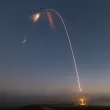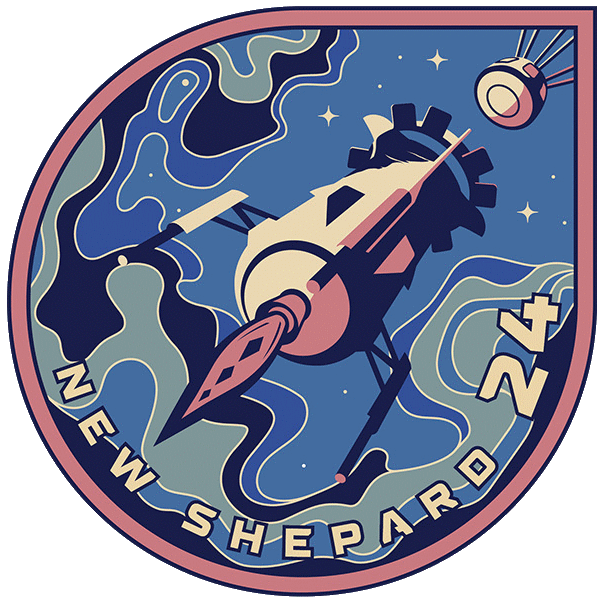Featured Image Credit: Blue Origin
Liftoff Time | December 19, 2023 – 16:42:28 UTC | 10:42:28 CST |
|---|---|
Mission Name | NS-24 |
Launch Provider | Blue Origin |
Customer | NASA, K-12 Schools, universities, STEAM-focused organizations |
Rocket | New Shepard, propulsion module NS4.9 |
Launch Location | Launch Site One, Corn Ranch, Texas, USA |
Payload mass | TBD |
Where did the capsule go? | Suborbital trajectory, with a maximum altitude of 107 km (~66 mi) |
Did they attempt to recover the first stage? | Yes |
Where did the first stage land? | It will land at Blue Origin’s landing pad, ~3.3 km (~2 mi) from the launch site |
Did they attempt to recover the fairings? | There are no fairings on the New Shepard vehicle |
Were these fairings new? | There are no fairings on the New Shepard vehicle |
This was the: | – 1st flight for Blue Origin in 2023 – 24th overall flight of New Shepard |
Where to watch: | Official replay |
What’s All This Mean?
Blue Origin provides yet another uncrewed flight for an assortment of clients on its New Shepard rocket. Moreover, the single-staged vehicle carries a capsule on top, which hosts many different payloads. These should reach space following a sub-orbital trajectory, and experience microgravity conditions. In order to do this, liftoff should occur at the company’s facilities in West Texas: Launch Site One. Once the booster and the capsule separate, both of them should find themselves on different paths. However, they will be aiming at a safe landing relatively close to the launch pad. Only the booster stage is designed to propulsively touch down, while the capsule uses parachutes.
It is important to note that New Shepard’s last mission ended in a failure, with the capsule using its abort motor to separate. Back then, we covered this unfortunate flight in our NS-23 article — luckily, no one suffered any harm. Continue reading, as in the present article we will expand on the failure during New Shepard’s previous flight.
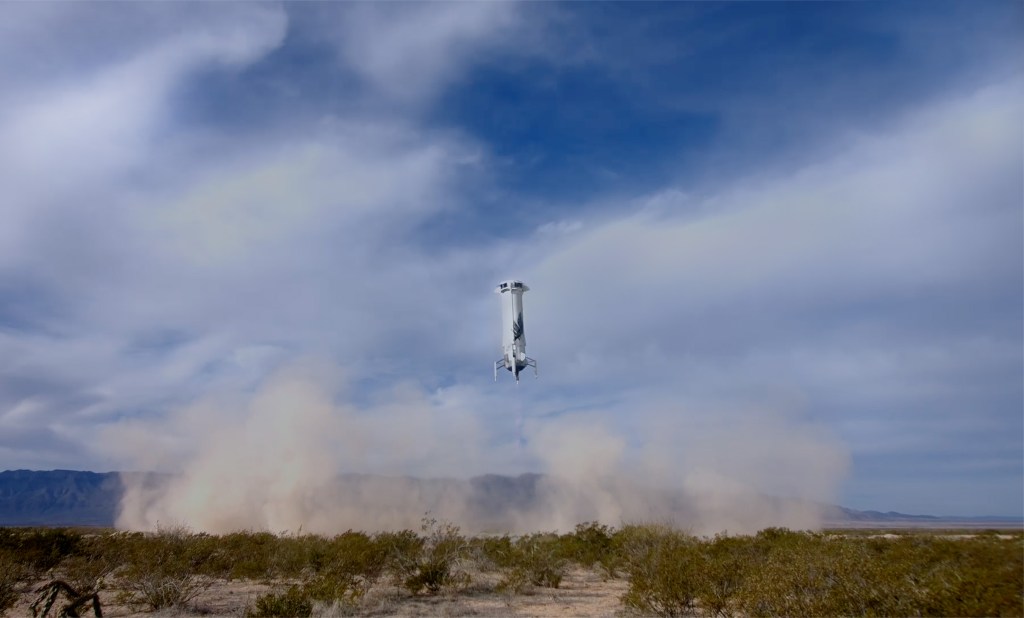
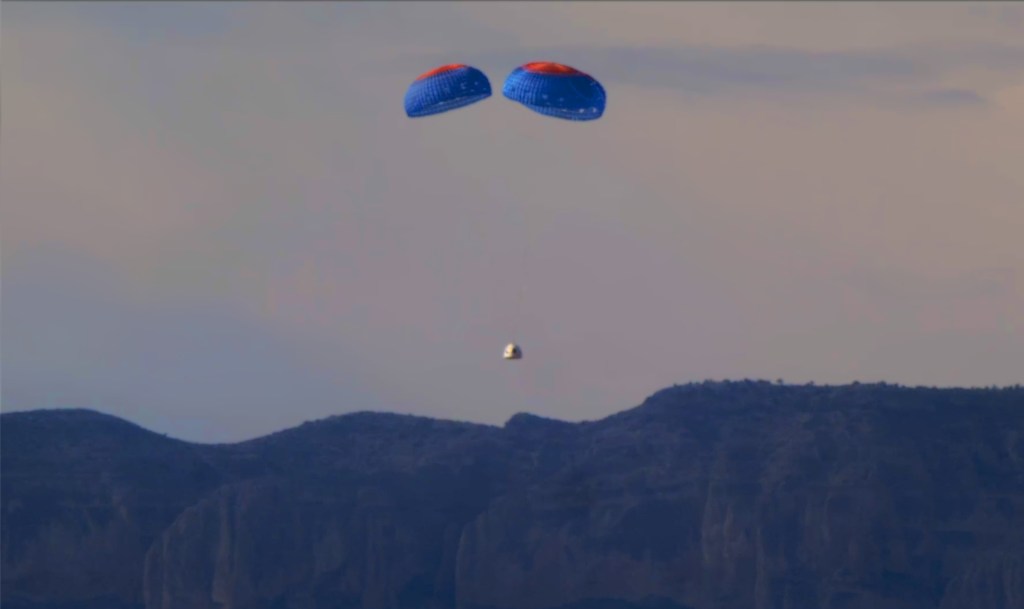
How Did It Go?
After going through a couple of holds, the BE-3PM engines ignited to finally lift off merely minutes past the time announced prior to flight. New Shepard then took to the skies, performing a nominal flight. In effect, booster and capsule separated after main engine cutoff without issues. Both vehicles followed their expected trajectories, experiencing a stretch of free fall flight — the so-called microgravity. They reached an apogee of approximately 107 km (~66 mi), after which their descent began. The NS-24 mission concluded with the booster propulsively landing, while the capsule landed under three main parachutes. Thus, the flight lasted a total of 10:13 min and concluded successfully.
What’s On NS-24?
This time, the number of payloads taking a ride aboard the NS-24 mission amounted to 33, meaning it was not an exact repeat of NS-23. They came from many different customers, though more than half of them benefited from NASA’s support. Further prominent sources for payloads were universities and K-12 schools, i.e., kids from kindergarten age up to 18 years old. That is, via New Shepard’s launches, these kids could engage in STEAM activities early on in their lives. Other organizations focusing on Science, Technology, Engineering, Arts, and Mathematics provided payloads, too. Additionally, 38,000 postcards made by students from all over the world traveled thanks to Club for the Future.
Prior to flight, Blue Origin had not provided a full disclosure of the payloads on NS-24. However, some were from NS-23’s payload, according to a statement from the firm. You can then read about that payload in our corresponding article, linked above.
During this mission’s livestream, the hosts confirmed the rocket was reflying payloads, mentioning some of them that we list below:
- Infinity Fuel Cell: AMPES
- Fluidic Operation in Reduced Gravity Experiment (FORGE)
- Spring Into Space
- Eagle Cam
- Teachers In Space
NS-23’s Failure
During New Shepard’s previous uncrewed flight, in September of 2022, its booster suffered a structural fatigue failure in the engine nozzle. Because of this, it broke and thrust shifted from pointing directly upward to a slightly inclined direction. The rocket’s safety systems on board detected the anomaly, triggering emergency actions as a consequence. Accordingly, the Crew Capsule ignited its solid rocket motor — reserved for abort scenarios — and separated from the rest of the vehicle. In like manner, the single stage shut down its engine. The lower section of the launcher crashed inside the predicted zone for such a mishap, while the capsule safely landed under parachutes.
The issue originated by an area of the engine nozzle reaching higher temperatures than intended. Blue Origin’s investigation showed that this nozzle configuration worked hotter than the previous one. Particularly, a hot streak found in recovered nozzle debris was consistent with similar streaks appearing during engine tests. These were actually a part of the mishap’s investigation, showing the mentioned configuration’s boundary layer1 conditions caused more heating than previous ones.
Everyday Astronaut’s video about engine cooling: Why Don’t Rocket Engines Melt? should help you understand what was going on with this nozzle.
Return To Flight
Blue Origin led the anomaly’s investigation, with the Federal Aviation Administration (FAA) supervising the whole process. Further, the FAA conferred both NASA and the National Transportation Safety Board the status of official observers. Once the company completed the task, the FAA required 21 corrective actions to be applied before the present flight. These, however, did not include any change regarding crew safety systems. On the other hand, Blue Origin reported design changes to the engine’s combustion chamber.
Modification of operational parameters were also included among the corrective measures. As a result, the cause of the mishap should not see itself repeated, while the nozzle’s structural performance should see an increase under efforts stemming from temperature, and forces that change in time. In another important remark, the reports states public safety was never threatened, nor resulted in injuries nor damage to public property.
What Is New Shepard?
Aptly named New Shepard, after the first American to be launched on a suborbital trajectory, Alan Shepard, this rocket is designed for suborbital flights. So far, the company completed the manufacturing of four New Shepard rockets: NS1, NS2, NS3, and NS4 — NS5 is a work in progress. NS1 flew for the first time on April 29, 2015 and reached an altitude of 93.5 km (58.1 mi) before failing to land because of a hydraulic pressure issue. In spite of the failure, the capsule landed successfully by parachute and was recovered.
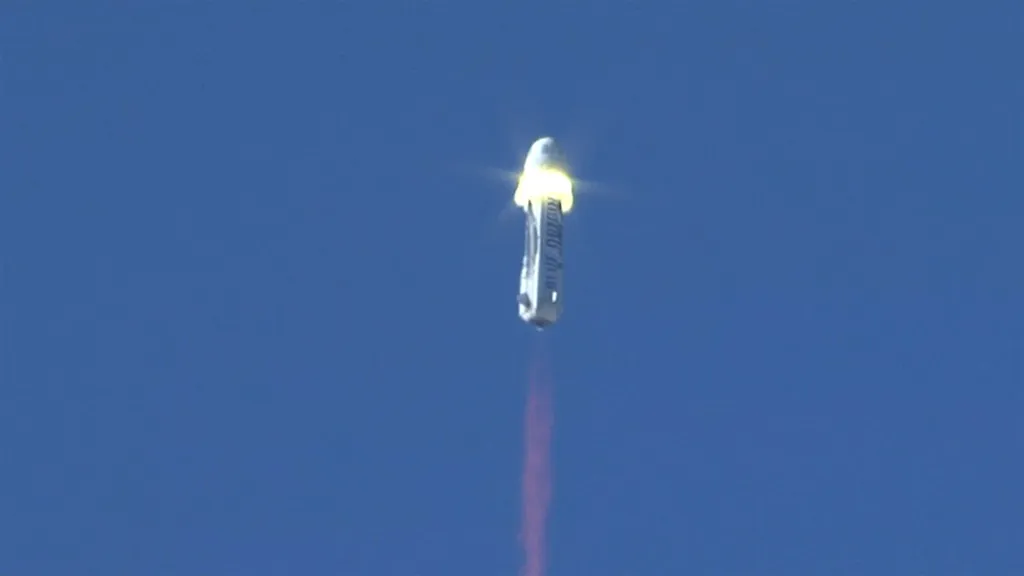
The New Shepard booster flies powered by a single BE-3PM cryogenic engine with the capability of producing 489 kN (110,000 lbf) of thrust. Both liquid hydrogen (LH2) and liquid oxygen (LOx) feed the BE-3PM, with Blue Origin developing and testing them in the 2000s.
NS2
After the failure of NS1, Blue Origin then moved on to NS2 which completed the first successful launch and landing of a New Shepard booster on November 23, 2015 after reaching an apex of 100.5 km (62.4 miles). This marked the first time that a New Shepard rocket had carried a capsule above the Kármán line, descended it in a controlled fashion, and landed successfully on deployable landing legs. About a month later SpaceX did one better – they landed an orbital class rocket booster for the first time.
NS2 was also the booster to perform the famous in-flight abort where the Crew Capsule 2.0 fired its single solid-propellant abort motor at an altitude of 7.1 km (4.4 miles) to simulate a failure of the booster. This test was successful and both the capsule and booster were recovered. NS2 went on to complete five more successful test flights before its retirement.

NS3
After the retirement of NS2, Blue Origin moved on to testing the still active NS3 vehicle. Before NS-23, NS3 had completed eight successful flights with the first one occurring on December 12, 2017. NS3 also flew Crew Capsule 2.0, the second iteration of the capsule. Improvements to NS3 included enhanced recovery hardware to increase reusability, as well as increased thermal protection.
NS-23 marked the ninth and final flight for New Shepard Tail 3. Particularly, it was reserved purely for non-human flights as it was never human rated.
NS4
The fourth booster, NS4, has some improved accessibility panels for easier cleaning and checkouts of the hardware. It had already performed eight flights, in which it landed successfully along with the capsule. Its first flights have given Blue Origin and the FAA confidence to fly humans on this booster.
NS4 launched during the NS-24 mission, successfully landing.
The Crew Capsule
New Shepard’s Crew Capsule has the capability to carry up to six people in a large pressurized 15 m3 (530 ft3) interior. Blue Origin’s main goal is to open up the experience of microgravity and the view of the curvature of the Earth to the general public. Each large window can let through 92% of visible light despite its structural ability to hold pressure making the experience that much more clear.
Audiences had the ability to see unique views of the people inside the capsule during the first human flight of New Shepard NS-16. This is due to the use of 12 interior cameras with HDR capabilities so great that both the interior and exterior of the capsule can be properly exposed. Future ordinary space tourists will be able to get their own personal copy of a memorable flight.

For safety, the capsule has a built-in solid-fueled abort motor known as the Crew Capsule Escape Solid Rocket Motor (CCE-SRM) in the “pusher” configuration. Check out the Everyday Astronaut video and article on the differences and advantages/disadvantages to puller versus pusher configured motors. This motor comes from Aerojet Rocketdyne and its proof testing took place on the final flight of NS2.
- Combustion gasses flowing the closest to a wall; in this case, the nozzle’s wall. ↩︎

